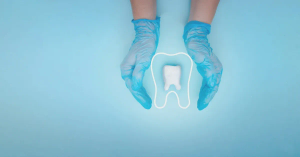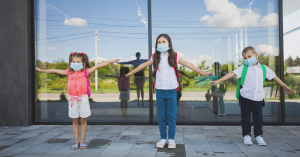As parents, we want the best for our children, especially when it comes to their health. Oral hygiene plays a crucial role in overall well-being, and choosing the right toothpaste is a decision that shouldn’t be taken lightly. With so many brands claiming to be “kid-friendly” and “safe,” it can be overwhelming to pick the best one. This article will guide you through the important factors to consider before buying toothpaste for your child, ensuring their teeth stay healthy and strong.
Why Kids Need Special Toothpaste?
You might wonder why children can’t just use the same toothpaste as adults. The answer lies in two main factors—fluoride concentration and ingredient safety.
Children’s teeth are still developing, and their enamel is softer than adult teeth. Toothpaste formulated for kids contains the right balance of fluoride to strengthen enamel while being safe in case they accidentally swallow some. Additionally, many adult toothpastes contain strong abrasives and chemicals that may be too harsh for young teeth and gums.
Fluoride: Safe or Not for Kids?
Fluoride is a mineral that helps prevent cavities by making tooth enamel more resistant to acid attacks. It’s found in most toothpastes, but many parents worry about its safety for young children. The key concern is fluorosis, a condition that causes white spots on teeth due to excessive fluoride intake.
Here’s what parents need to know:
• For children under 3 years old, use a smear (rice grain-sized) amount of fluoride toothpaste if they are at high risk of cavities. If their risk is low, you can use a fluoride-free option.
• For children aged 3 to 6, a pea-sized amount of fluoride toothpaste is recommended. At this age, kids should be taught to spit out toothpaste instead of swallowing it.
• Once kids are 6 and older, they can use regular fluoride toothpaste as they are less likely to swallow it.
The American Dental Association (ADA) and the Indian Dental Association (IDA) both support using fluoride toothpaste in appropriate amounts, as its benefits outweigh the risks when used correctly.
Harmful Ingredients to Watch Out For
Not all toothpaste is created equal. Many brands include ingredients that may not be safe for children. Here are some to be aware of:
• Sodium Lauryl Sulfate (SLS): This is a foaming agent found in many toothpastes, but it can cause mouth irritation and ulcers in some kids.
• Artificial Sweeteners & Dyes: Many kids’ toothpastes contain artificial colors and sweeteners like aspartame or saccharin, which may not be the best choice for overall health.
• Triclosan: Previously used for its antibacterial properties, this ingredient has been banned in some countries due to potential health risks.
• Harsh Abrasives: Some toothpastes contain rough particles that can wear down enamel over time. Children’s toothpaste should have mild abrasives to clean without damaging their teeth.
Flavored Toothpaste: A Good or Bad Idea?
Most kids’ toothpastes come in flavors like bubblegum, strawberry, or mango, making brushing more enjoyable. While this can encourage kids to brush regularly, overly sweet flavors may tempt them to swallow the toothpaste. If your child tends to do this, it’s best to choose a mildly flavored option or supervise brushing until they learn to spit properly.
When to Start Using Toothpaste?
The right time to start using toothpaste depends on your child’s age:
• Before the first tooth appears: Clean your baby’s gums with a soft, damp cloth after feeding.
• When the first tooth erupts (around 6 months): Start using a tiny smear of fluoride toothpaste on a soft-bristled baby toothbrush.
• By age 2 or 3: Encourage brushing twice a day with a rice grain-sized amount of toothpaste.
• By age 6: Kids can begin brushing with a pea-sized amount under adult supervision.
How to Encourage Good Brushing Habits?
Getting children excited about brushing their teeth can be challenging, but making it a fun experience helps. Here are some simple tips:
• Make brushing a family activity: Kids love copying their parents. Brushing together can set a good example.
• Use a fun toothbrush: Colorful toothbrushes with their favorite cartoon characters can make brushing more exciting.
• Sing a song or use a timer: A two-minute brushing song or a sand timer can help kids brush for the right amount of time.
• Reward good brushing behavior: A sticker chart or small rewards can encourage consistent brushing habits.
Best Types of Toothpaste for Kids
When choosing toothpaste, look for the following:
• ADA or IDA seal of approval to ensure it meets safety and effectiveness standards.
• Fluoride content suitable for their age to prevent cavities while being safe if swallowed in small amounts.
• Natural or mild ingredients without harsh chemicals or artificial sweeteners.
• Pleasant but not overpowering flavor to encourage brushing without tempting them to swallow.
The Bottom Line
Choosing the right toothpaste for your child is a small but important step in their overall oral health. A good kids’ toothpaste should contain the right amount of fluoride, avoid harmful ingredients, and have a flavor that encourages regular use. While toothpaste plays a key role, proper brushing technique and routine dental visits are just as important in preventing cavities and maintaining a healthy smile.








